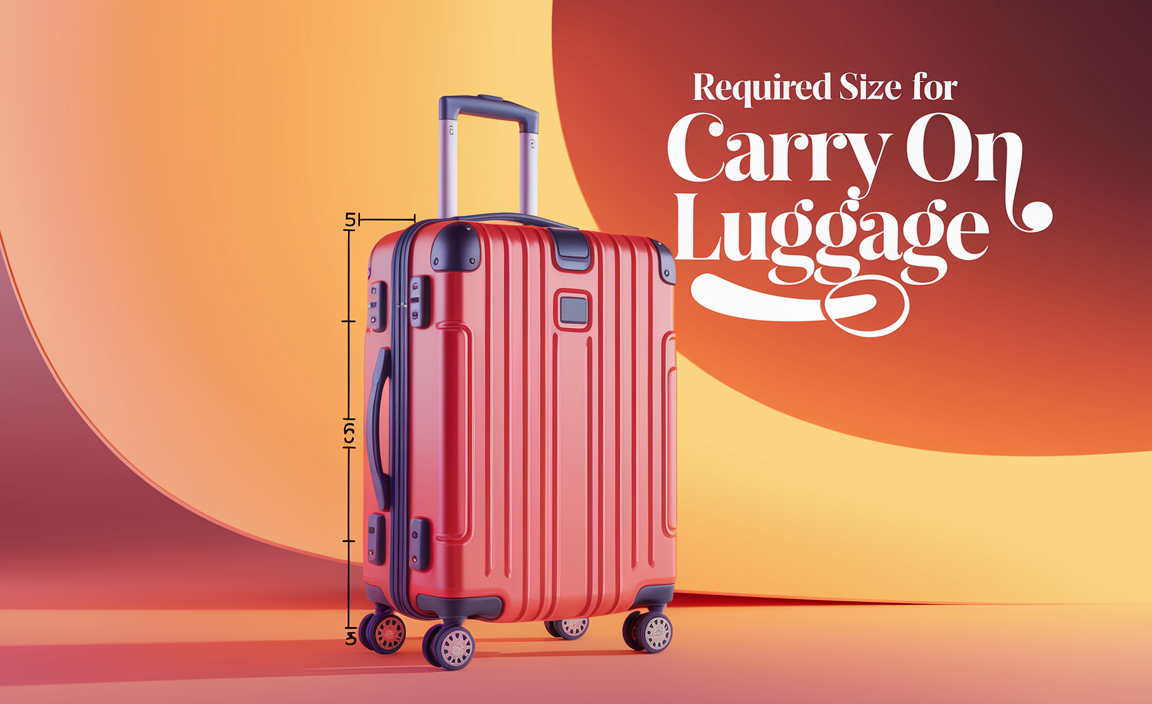Your Austria shoulder season trip plan is achievable with smart preparation. This guide covers the best times to visit, what to pack for variable weather, and how to enjoy Austria’s charm without the peak summer crowds or winter chill, ensuring a comfortable and memorable experience.
Dreaming of Austria’s imperial cities, charming villages, and breathtaking Alps, but worried about crowds and high prices? Many travelers feel the same! Planning a trip during the shoulder seasons – spring (April to May) and autumn (September to October) – offers a perfect sweet spot. You get beautiful scenery, fewer tourists, and often better deals. But knowing exactly when to go and what to expect can make all the difference. This guide is your stress-free roadmap to planning an amazing Austria trip during these delightful transitional periods. We’ll cover everything from picking the best months to packing smart, ensuring your journey is as comfortable and enjoyable as possible.
Why Choose Austria Shoulder Season?
Choosing the shoulder season for your Austrian adventure is a smart move for several reasons. It’s all about maximizing your experience while minimizing common travel headaches. Think fewer queues at popular attractions, more authentic interactions with locals, and a better chance to soak in the atmosphere without feeling rushed. This period provides a unique window to witness Austria in its full glory, with each season offering its distinct charm.
The Appeal of Spring in Austria (April – May)
Spring in Austria is a season of rebirth and blossoming beauty. As the snow melts from the mountains, vibrant green landscapes emerge, and flower-filled meadows dot the countryside. Cities shake off their winter coats, and outdoor cafes begin to bustle again. While early spring can still be a bit chilly, especially in mountainous areas, by late May, the weather is often pleasantly warm.
- Pro: Nature awakens with blooming flowers and lush greenery.
- Pro: Fewer tourists mean more intimate experiences at landmarks like Schönbrunn Palace or the Salzburg Residenz.
- Pro: Prices for flights and accommodation can be more affordable than peak summer months.
- Con: Early spring (April) can still see unpredictable weather, including late snowfalls.
- Con: Some high-altitude hiking trails might still be closed due to snow.
The Magic of Autumn in Austria (September – October)
Autumn in Austria is often considered postcard-perfect. The summer heat fades, replaced by crisp, clear air and a spectacular display of fall foliage. The vineyards turn golden, and the forests are ablaze with reds, oranges, and yellows. It’s a wonderful time for city explorations, leisurely walks, and enjoying hearty Austrian cuisine.
- Pro: Golden autumn colors create stunning backdrops for photography and sightseeing.
- Pro: Harvest festivals and ‘Almabtrieb’ (cattle drives down from the mountains) offer unique cultural experiences.
- Pro: Comfortable temperatures are ideal for walking tours and enjoying outdoor activities.
- Con: The days get shorter as you move into October, with earlier sunsets.
- Con: Weather can become rainier towards the end of October, especially in the west.
Best Months for Your Austria Shoulder Season Trip
While both spring and autumn offer fantastic opportunities, certain months often stand out as particularly ideal for an Austria shoulder season trip. These are when you’re most likely to hit the sweet spot of good weather, beautiful scenery, and manageable crowds.
May: Spring’s Sweet Spot
May is frequently cited as one of the best months to visit Austria during the spring shoulder season. The weather is generally mild to warm, the landscapes are vibrantly green, and most major attractions are fully open. You can enjoy outdoor activities and city exploration without the intense heat or humidity that sometimes plagues summer. It’s also before the main European school holidays begin, meaning lighter crowds.
September: Autumn’s Gentle Embrace
September is the quintessential autumn month for an Austrian escape. The intense summer heat has subsided, replaced by pleasant, crisp air perfect for sightseeing and hiking. The landscapes begin to transform into a tapestry of autumn colors, offering breathtaking views. While it’s still a popular time, you’ll find it significantly less crowded than July or August.
October: A Glimpse of Late Autumn
For those who love the rich colors and cozy feel of autumn, October can be a wonderful choice. The foliage is typically at its peak, especially in the early part of the month. While temperatures can drop and the chance of rain increases, especially later in the month, it’s still an excellent time for cultural city breaks. Plus, fewer tourists often mean even more competitive prices.
Planning Your Austria Shoulder Season Itinerary
A well-planned itinerary is key to making the most of your shoulder season trip. Consider what you want to see and do, and then tailor your plan to the specific advantages of visiting during these transitional months. Here’s a flexible approach to help you craft your perfect Austrian journey.
Deciding Where to Go
Austria offers diverse experiences, from imperial cities to alpine landscapes. Shoulder seasons are excellent for exploring:
- Vienna: The capital comes alive with charming cafes and imperial palaces. May and September are particularly pleasant for walking tours.
- Salzburg: Explore Mozart’s birthplace and the stunning Hohensalzburg Fortress. The city is beautiful in both spring blooms and autumn colors.
- The Alps (e.g., Tyrol, Salzkammergut): May is perfect for early hiking and enjoying mountain scenery as it awakens. September and early October showcase stunning fall foliage with comfortable hiking temperatures.
- Hallstatt: This picturesque lakeside village is charming year-round, but less crowded in the shoulder months.
Sample Itinerary Ideas
Here’s a glimpse of what a 7-day trip could look like, focusing on a mix of culture and nature during the shoulder season.
Option 1: Vienna & Salzburg Explorer (7 Days)
This itinerary focuses on Austria’s most iconic cities, perfect for a cultural immersion.
- Days 1-3: Vienna – Arrive in Vienna. Explore Schönbrunn Palace, St. Stephen’s Cathedral, the Hofburg Palace, and enjoy Sachertorte at a traditional coffee house. Consider a classical music concert.
- Day 4: Travel to Salzburg – Take a scenic train ride to Salzburg (approx. 2.5-3 hours).
- Days 4-6: Salzburg – Visit Mozart’s Birthplace, take the funicular up to Hohensalzburg Fortress, explore the charming Old Town, and perhaps visit Mirabell Palace and Gardens.
- Day 7: Departure – Depart from Salzburg, or take the train back to Vienna for departure.
Option 2: Alpine Charm & Lakes (7 Days)
For those who love nature and picturesque scenery.
- Days 1-3: Salzburg – Arrive in Salzburg. Explore the city center and its musical heritage.
- Day 4: The Salzkammergut Lake District – Day trip or overnight stay in the beautiful Salzkammergut region. Visit picturesque towns like St. Wolfgang or St. Gilgen. Consider a boat trip on Wolfgangsee.
- Days 5-6: Hallstatt & Surrounds – Travel to Hallstatt, explore the iconic lakeside village, visit the salt mines, and enjoy the stunning mountain views.
- Day 7: Departure – Depart from Salzburg after returning from Hallstatt.
Booking Your Accommodation and Transport
Shoulder season travel often means better deals. Look for accommodation options ranging from charming guesthouses and boutique hotels to well-equipped apartments. Booking in advance is still recommended, especially if you have specific preferences or are traveling around local holidays.
For transport, Austria has an excellent public transportation network, particularly its trains. The ÖBB (Austrian Federal Railways) offers comfortable and efficient travel between major cities and towns. Booking train tickets in advance can sometimes secure discounted fares. Consider an Austria Pass if you plan extensive train travel.
What to Pack for Austria in the Shoulder Seasons
Packing for Austria during the shoulder seasons requires versatility. The weather can shift from pleasant sunshine to cooler, wetter conditions quite rapidly. Layering is your best strategy!
Essential Clothing Items
Focus on comfortable, practical items that can be layered effectively.
- Base Layers: Moisture-wicking tops and thermal leggings (especially for early spring or late autumn, or if heading to higher altitudes).
- Mid-Layers: Fleece jackets, sweaters, or cardigans for warmth.
- Outerwear: A waterproof and windproof jacket is essential. A light, packable down jacket can also be useful for added warmth.
- Bottoms: Comfortable trousers or jeans, and perhaps a pair of hiking pants if you plan to explore nature trails.
- Tops: Long-sleeved shirts and T-shirts.
- Footwear: Comfortable walking shoes or hiking boots are a must. Bring a second pair in case one gets wet. Waterproof shoes are ideal.
- Accessories: A scarf, gloves, and a hat are invaluable for cooler days and evenings.
Special Considerations for Comfort and Preparedness
Traveling should always be comfortable, and being prepared for anything reduces stress. For longer journeys, especially flights or road trips, having discreet and reliable personal care solutions can provide peace of mind.
For adults who might need extra security and comfort, especially during extended travel times, consider packing adult diapers or briefs. Leading brands offer products designed for maximum absorbency and discretion, ensuring you can focus on enjoying your trip without worry. Similarly, for families traveling with young children, having easy-to-use child diapers readily available is crucial for smooth transitions and unexpected moments.
Remembering these personal essentials ensures that comfort and dignity are prioritized, allowing for a more relaxed and enjoyable travel experience for everyone.
Electronics and Travel Gear
- Universal Adapter: Austria uses Type F power sockets.
- Portable Power Bank: Essential for keeping your devices charged on the go.
- Camera: To capture the stunning scenery and cultural sights.
- Backpack: A comfortable daypack for carrying essentials while exploring.
- Reusable Water Bottle: Stay hydrated and reduce plastic waste.
- Small First-Aid Kit: Include basics like plasters, pain relievers, and any personal medications.
Navigating Potential Weather Challenges
While shoulder seasons offer a pleasant escape, it’s wise to be prepared for variable weather. Here’s how to stay comfortable:
Embracing the Layering System
The key to comfortable dressing in fluctuating temperatures is the art of layering. Start with a base layer that wicks away moisture, add an insulating mid-layer like a fleece or sweater, and top it off with a waterproof and windproof outer shell. This allows you to easily adjust your clothing as the temperature changes throughout the day.
Checking Forecasts and Staying Informed
Before your trip and even daily, check the weather forecast for the regions you’ll be visiting. Websites like the Zentralanstalt für Meteorologie und Geodynamik (ZAMG), Austria’s national meteorological service, provide reliable and detailed weather information.
Rainy Day Activities
Even with the best planning, a rainy day can happen. Austria has plenty of indoor attractions to enjoy:
- Museums and Art Galleries (e.g., Kunsthistorisches Museum in Vienna, Salzburg Museum).
- Imperial Palaces (Schönbrunn Palace, Hofburg Palace).
- Concerts and Opera (check local listings).
- Traditional Coffee Houses (for a cozy break).
- Historical Churches and Cathedrals.
Experiencing Austrian Culture in Shoulder Season
The shoulder seasons often provide a more authentic cultural experience, as you’re more likely to interact with locals and witness traditions without the overwhelming presence of mass tourism.
Festivals and Events
Both spring and autumn host unique festivals and events:
- Spring: Easter Markets (Ostern) in March/April, various local May Day (Maifeiertag) celebrations.
- Autumn: Harvest Festivals, Wine Festivals (Weinfeste), ‘Almabtrieb’ (cattle drives from mountain pastures, typically September/October), and religious holidays like All Saints’ Day (Allerheiligen).
Always check local event calendars closer to your travel dates for specific information.
Cuisine to Savor
Shoulder seasons are perfect for enjoying Austria’s hearty cuisine. In spring, dishes start to incorporate fresh, seasonal produce. Autumn brings delicious harvest-themed meals, including game, mushrooms, and apple treats as the apple season peaks.
Don’t miss trying traditional Austrian dishes like Wiener Schnitzel, Goulash, Kaiserschmarrn, and Apfelstrudel. The cozy cafes and traditional Gasthäuser (inns) offer the perfect setting to enjoy these culinary delights.
Budgeting for Your Austria Shoulder Season Trip
One of the significant advantages of traveling during the shoulder season is the potential for cost savings. However, it’s still important to budget effectively.
Accommodation Costs
You’ll generally find lower prices for hotels and other accommodations compared to the peak summer months. However, prices in prime locations or for highly sought-after boutique hotels might remain relatively high, so booking in advance is still a good strategy.
Transportation Savings
Flights into Austria can often be cheaper during April, May, September, and October. Similarly, train tickets booked in advance can offer considerable discounts.
Activity and Food Expenses
While entrance fees to major attractions remain constant, you might find more deals on tours or activities. Dining out can also be more budget-friendly, with local eateries offering great value. Look for ‘Mittagsmenü’ (lunch menus) for excellent deals on multi-course meals.
Sample Budget Considerations (Per Person, Per Day estimate – excluding flights):
This is a general estimate and can vary significantly based on travel style and specific choices.
| Category | Budget Traveler (€) | Mid-Range Traveler (€) | Comfort Traveler (€) |
|---|---|---|---|
| Accommodation | 50-80 | 90-150 | 160+ |
| Food | 30-50 | 50-80 | 90+ |
| Activities/Entrance Fees | 20-40 | 40-70 | 80+ |
| Local Transport/Incidentals | 10-20 | 20-30 | 30+ |
| Total Per Day | 110-190 | 200-330 | 360+ |
It’s always wise to add a buffer for unexpected expenses.
Frequently Asked Questions About Austria Shoulder Season Travel
Here are some common questions travelers have when planning a trip to Austria during the shoulder seasons:
Q1: Will it be too cold to enjoy outdoor activities in April or October?
A1: Early April can still be quite cool, with occasional snow in higher elevations. By late May, it’s usually pleasantly warm. In autumn, September is often mild and sunny, while October can be crisp and cooler. Layering clothing is key, and if you plan on strenuous activities like hiking, check conditions regularly.
Q2: Are all major tourist attractions open during the shoulder seasons?
A2: Yes, most major attractions in cities like Vienna and Salzburg are open year-round. Some very high-altitude tourist facilities or specific summer-only attractions in the Alps might close in late October or not open until late May, but the main highlights are generally accessible.
Q3: Is it significantly cheaper to travel in the shoulder season?
A3: Generally, yes. You’ll often find lower prices for flights and accommodation compared to the peak summer months (June-August). However, prices can still be higher around local holidays or in very popular areas.
Q4: What kind of crowds can I expect?
A4: You can expect significantly fewer crowds than in the peak summer months. This means shorter lines at attractions and a more relaxed experience. However, popular cities will still have visitors, especially on weekends or




